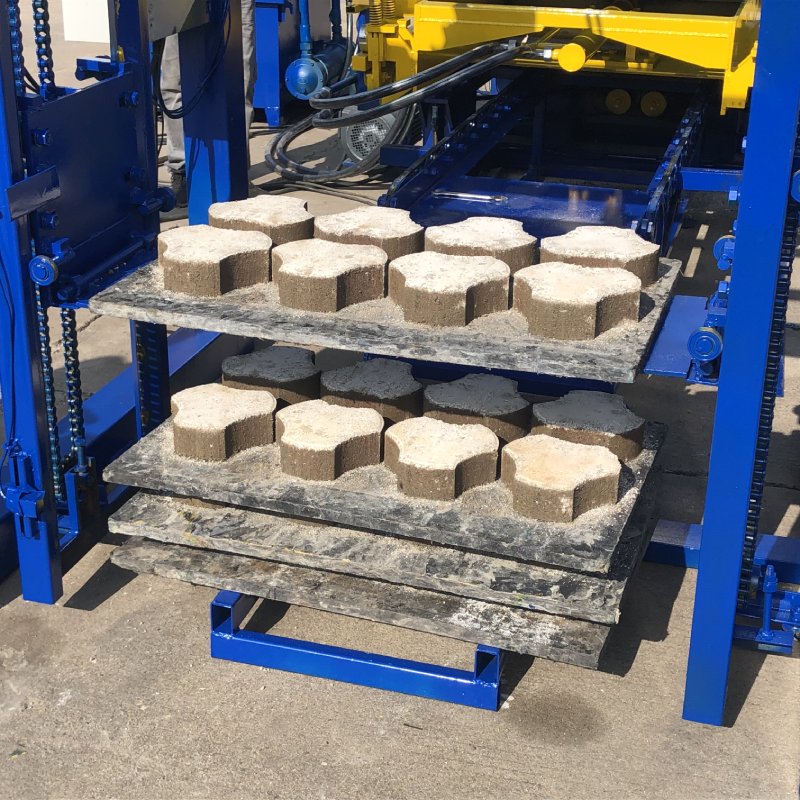
Image source:Aiwei block machine
Introduction
Chinese brick making machines have witnessed significant advancements in recent years, with automation playing a pivotal role in enhancing efficiency, productivity, and overall performance. Automation systems have revolutionized the brick manufacturing industry by streamlining processes, reducing labor requirements, and improving the quality and consistency of brick production. This article explores the innovations in Chinese brick making machine automation systems, highlighting key technologies, their benefits, and the impact they have on the industry.
Introduction to Brick Making Machine Automation
Brick making machine automation involves the integration of advanced technologies to automate various stages of the brick manufacturing process. Automation systems enable precise control over critical parameters, such as material feeding, mixing, molding, drying, and stacking. These systems utilize sensors, actuators, programmable logic controllers (PLCs), and human-machine interfaces (HMIs) to monitor and control the machines’ operations.
Key Innovations in Automation Systems
PLC Control Systems:
Programmable Logic Controller (PLC) systems are at the core of automation in Chinese brick making machines. PLCs provide precise control over the machine’s operations, allowing for real-time monitoring and adjustment of parameters. They enable the synchronization of different machine components and processes, ensuring smooth and efficient operation.
Sensor Technology:
Sensors play a crucial role in automation systems by providing real-time feedback and data. Various types of sensors, such as proximity sensors, pressure sensors, and temperature sensors, are integrated into brick making machines to monitor critical parameters, detect abnormalities, and trigger appropriate responses. Sensor technology enables precise control over material flow, mixing ratios, curing conditions, and quality assurance.
Robotics and Robotic Arm Systems:
Robotics has revolutionized the brick making industry by automating labor-intensive tasks. Robotic arm systems are employed to handle materials, such as brick stacking, loading, and unloading. These systems improve efficiency, reduce human error, and enhance safety in the manufacturing process. They also allow for flexible production and quick reconfiguration for different brick sizes and designs.
Computer Vision Systems:
Computer vision technology is utilized in brick making machines to inspect and assess brick quality. High-resolution cameras capture images of the bricks, and advanced algorithms analyze them to identify defects, measure dimensions, and detect inconsistencies. Computer vision systems enable automated quality control, reducing the need for manual inspection and improving overall product quality.
Artificial Intelligence and Machine Learning:
Artificial intelligence (AI) and machine learning (ML) techniques are being integrated into automation systems to optimize brick making processes. AI algorithms analyze data from sensors and historical production data to optimize machine settings, predict maintenance needs, and improve efficiency. ML algorithms enable self-learning and adaptive control, leading to continuous optimization and improved performance.
Remote Monitoring and Control:
Automation systems often incorporate remote monitoring and control capabilities. Through internet connectivity, manufacturers can remotely monitor machine operations, collect data, and make adjustments in real-time. Remote monitoring enhances operational efficiency, facilitates troubleshooting, and enables timely decision-making.
Benefits of Automation Systems in Brick Making Machines
The incorporation of automation systems in Chinese brick making machines offers several benefits:
Increased Productivity:
Automation reduces the reliance on manual labor, leading to increased productivity and output. Machines can operate continuously with consistent speed and precision, reducing production downtime and bottlenecks.
Enhanced Quality and Consistency:
Automation systems ensure consistent and precise control over critical parameters, resulting in high-quality bricks with consistent dimensions, strength, and aesthetics. Automation reduces human error and variations, improving overall product quality.
Improved Efficiency and Cost Savings:
Automation systems optimize material usage, reduce waste, and optimize energy consumption. By eliminating manual processes and streamlining operations, manufacturers can achieve higher efficiency and reduce operational costs.
Safety and Workforce Optimization:
Automation systems eliminate or minimize workers’ exposure to hazardous tasks, improving workplace safety. Labor-intensive tasks are automated, allowing workers to focus on more skilled and value-added activities.
Flexibility and Customization:
Automation systems enable flexibility in producing different brick sizes, shapes, and designs. With quick reconfiguration capabilities, manufacturers can respond to diverse customer requirements and market demands.
Impact on the Brick Manufacturing Industry
The integration of automation systems in Chinese brick making machines has a profound impact on the brick manufacturing industry:
Technological Advancement and Competitiveness:
Automation systems drive technological advancement within the industry, allowing manufacturers to remain competitive in the global market. Companies that invest in automation gain a competitive edge by delivering high-quality products efficiently and meeting customer demands effectively.
Skilled Workforce Development:
While automation reduces labor requirements, it also creates opportunities for workers to upskill and transition to higher-value roles. Employees can be trained to operate and maintain the automation systems, ensuring a skilled workforce to support the industry’s growth.
Sustainable Manufacturing Practices:
Automation systems optimize resource utilization, reduce waste generation, and enhance energy efficiency. These sustainable manufacturing practices align with the industry’s growing focus on environmental responsibility and contribute to a greener brick manufacturing process.
Improved Market Reach and Customer Satisfaction:
Automation systems enable manufacturers to meet customer demands for quality, consistency, and customization. This improves customer satisfaction, strengthens relationships, and expands market reach, both domestically and internationally.
Industry Transformation and Collaboration:
The integration of automation systems encourages collaboration and knowledge-sharing within the brick manufacturing industry. Manufacturers, suppliers, and technology providers work together to develop innovative solutions, drive industry standards, and collectively shape the future of automated brick production.
Conclusion
Automation systems have revolutionized the Chinese brick making machine industry, enhancing efficiency, productivity, and product quality. Innovations such as PLC control systems, sensor technology, robotics, computer vision, and AI/ML algorithms have transformed the manufacturing process, leading to improved performance, reduced costs, and enhanced customer satisfaction. The adoption of automation systems has positioned Chinese brick making machines at the forefront of technological advancement, ensuring competitiveness and sustainability within the industry. As automation continues to evolve, manufacturers will continue to explore new technologies, driving further advancements and propelling the brick manufacturing industry into a more automated and efficient future.
https://youtu.be/poNGksyFhWc
